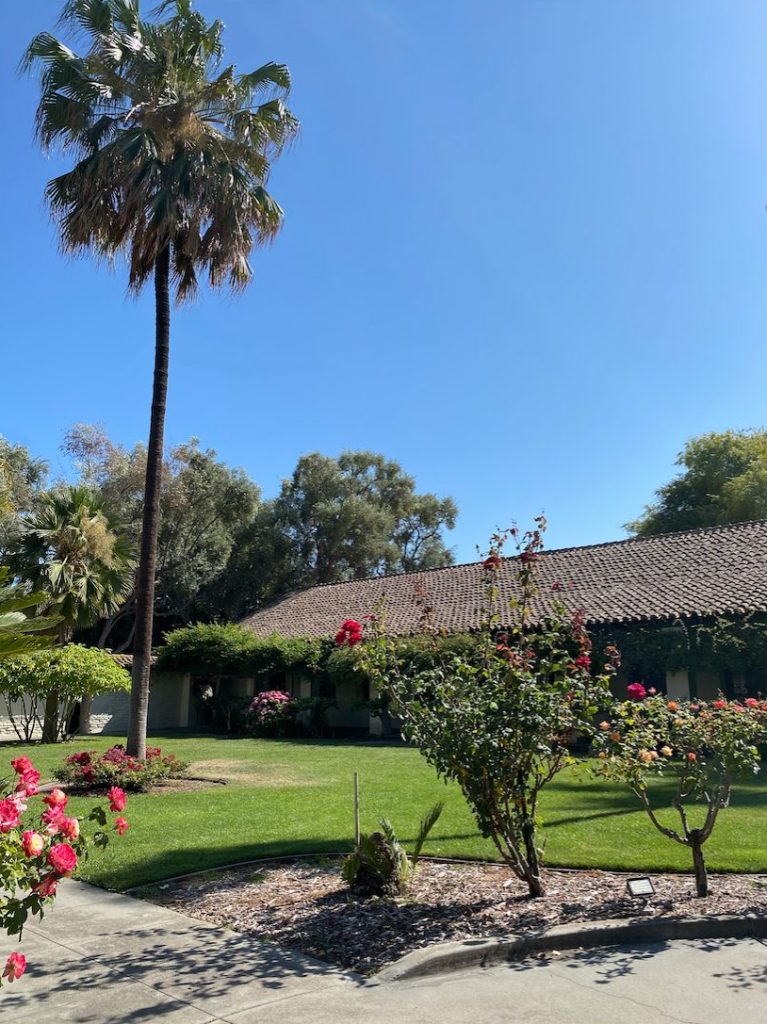
Those who have ever lived at Santa Clara cannot deny that life for them has been rendered more pleasant and attractive by these glorious manifestations of Nature’s blossomings, surrounding them on every side.”
(The Annals of Santa Clara: College and University 1851-1951, p. 830)
The Mission Gardens
Freshly cut grass, a plethora of colorful flowers, and the warmth of the sun. These are just some notable features of the Mission Gardens at Santa Clara University. Located behind the Mission Church and spanning from Nobili Hall to the Adobe Lodge, the Mission Gardens have been widely beloved by both students and faculty. Before the COVID-19 pandemic, it was common to see friends lay out their picnic blankets to hang out, eat lunch, or even study. Even if the garden was crowded, the vast lawn made it easy for anyone to find a secluded spot to de-stress from the demands of academia.
While the Mission Gardens are definitely a well known location on campus, what some may fail to realize is how long it took for the garden to become the beautiful spot we know it to be today. Dating back to the early 19th century when the 5th site of Mission Santa Clara begun to be built, the grounds were once the center of activity for Mission Santa Clara, with different types of labor occurring all around the garden as Dr. Lee Panich explains in this short video:
In terms of constructing their gardens, Spanish missionaries were known to have their grounds reflect the gardens and churches in Spain. An article in Pacific Horticulture covering the Mission Gardens explains, “In Andalusia, the sun was intense…The aesthetic elements [of Andalusian gardens] were privacy, shade, fragrance, and repose” (Jacobus 11). Although the gardens are known for their relaxing nature, it took years of planting, pruning, and directing growth to create the relaxing respite the grounds provide to students today.


The layout of the Mission Gardens has undergone many changes, particularly in the shift from a “Spanish” garden left by the Spanish Missionaries to the “Italian” garden created by the Italian Jesuits who would make up the faculty during the founding of Santa Clara College. Initially, records found in the SCU Annals reveal that two former staff members named Fr. Caredda and Mr. Lowrey had “mapped the original pathways and planted the first bed of California flowers” around 1861 (The Annals of Santa Clara: College and University 1851-1951, 829). Later in the 1860s, the brilliant mathematician, philosopher, and scientist Fr. Joseph Bayma helped to cultivate the garden, giving it a more “modern” look (Jacobus 12). He was especially known for designing the trellis layout of the garden during the 1880s, which hearkened back to the old world of Italy by holding grape vines; the grape vines were replaced by more-manageable Wisteria vines later on (McKevitt 54).

At this point in time, many of the original plants from the Mission period had died except for the olive trees cloistered around the Adobe Wall (The Annals of Santa Clara: College and University 1851-1951, 829-830). These trees, many of which we believe to still stand today, were probably planted sometime between 1822 and 1825, potentially making next year the 200th birthday of our historic olive trees (Jacobus 11).


Several other Jesuit faculty members are to be thanked for the development and upkeep of the Mission Gardens. Many credit Fr. George A. Gilbert for being the curator of the garden as he was responsible for creating the current layout seen today and often held tours of the grounds (“Historical Tour of Mission Santa Clara de Assisi,” Santa Clara University). In 1874, Fr. Gilbert wished to create an “international garden” and brought plant life from all over the world, even cultivating some wisteria and white lady banksia roses brought to campus from China (Mihalaos 5). Fr. Charles J. Kennedy, one of Santa Clara’s gardeners in the early 1900s, took care of the grounds by sweeping away the falling wisteria. Eventually, he grew tired of the process and began putting slips of wisteria among some of the few remaining grape vines that Fr. Bayma had planted for decades earlier, which many believe is the reason the vines bore fewer grapes and more wisteria over the years (Mihalaos 5).

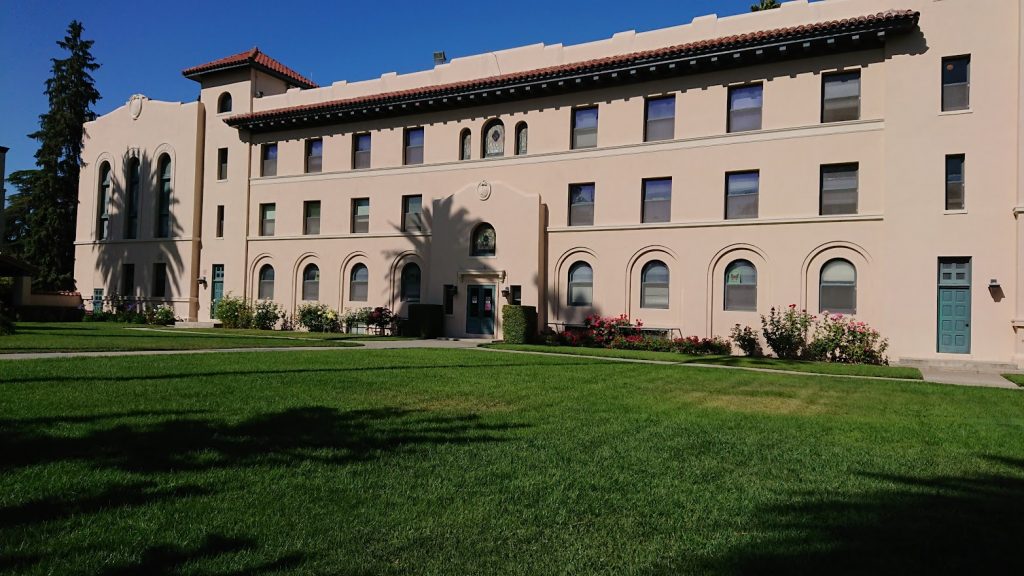
Fr. Schoener, who was known as the “Padre of the Roses,” was a Jesuit who studied roses and the creation of rose hybrids. Throughout his time in Santa Barbara where he lived before coming to Santa Clara, Fr. Schoener experimented with roses and sometimes fruits. His flowers often bore multiple bright colors or were incredibly tall ranging from 18 to 20 feet in height. In 1938 Fr. Schoener accepted a position at Santa Clara University as a faculty member. Although he asked for his 5000 variations of roses to be brought to Santa Clara in order to continue his research and add to the Mission Gardens, conflicts with administration made it difficult for him to continue his work (George M.A. Schoener Digital Collection, SCU Archives). While it is unknown whether or not Fr. Schoener’s roses were ever planted in the Mission Gardens and if they still stand today, his love for roses is definitely still felt with the beautiful flowers surrounding SCU’s gardens and in the larger neighborhood where it is common to encounter the refreshing fragrance of fresh rose blooms.

The Saint Clare Garden
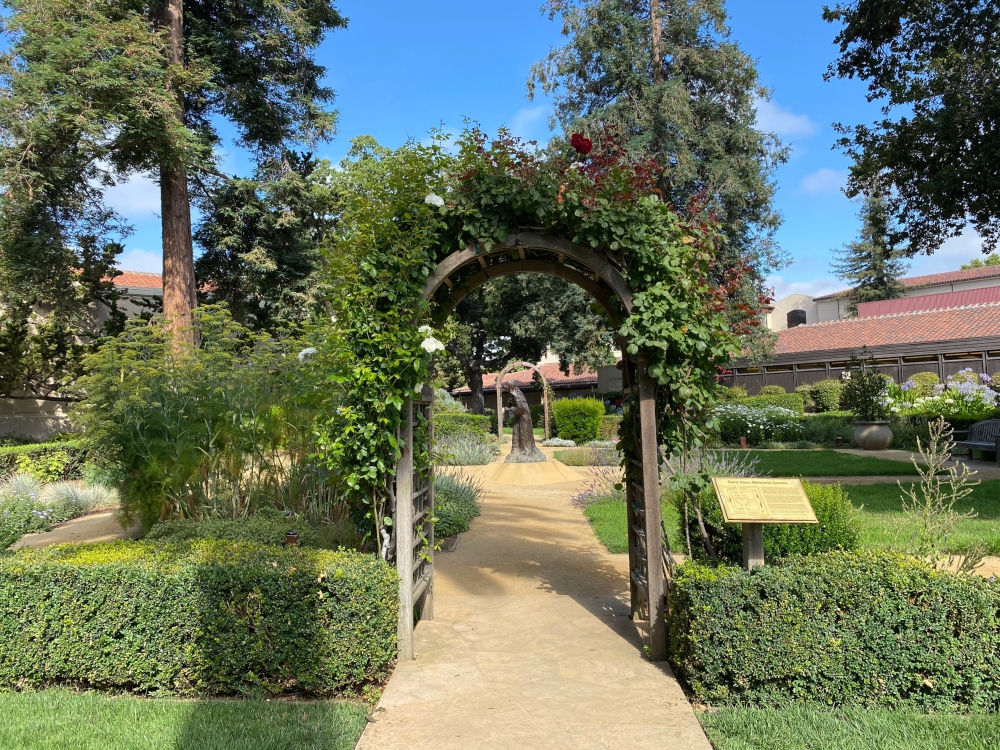
Located between the de Saisset Museum and Daly Science Building, the Saint Clare Garden is an often overlooked spot on campus. Constructed in 2003 as a memorial to St. Claire of Assisi, the patron saint of the Silicon Valley, this garden encourages visitors to meditate and reflect on one of its benches. As visitors sit down and relax they would notice the variety of flowers in the area, all of which were specifically chosen to reflect different stages of St. Claire’s life.

The wild flowers, which are native to Central Italy, reflect St. Claire’s childhood. The various medicinal and household herbs represent St. Claire’s adolescence as these plants were commonly used during her time. Towards the center of the grounds is the Lavender Garden, which symbolizes purification and is used to reflect St. Claire’s conversion. The Kitchen Garden reflects St. Claire’s monastic life with vegetables that were common during the medieval era. Lastly, the Mary Garden located towards the outskirts of the grounds traditionally represents Jesus and the Virgin Mary and is symbolic of St. Claire’s spiritual life (“St. Claire Garden”, Santa Clara University).
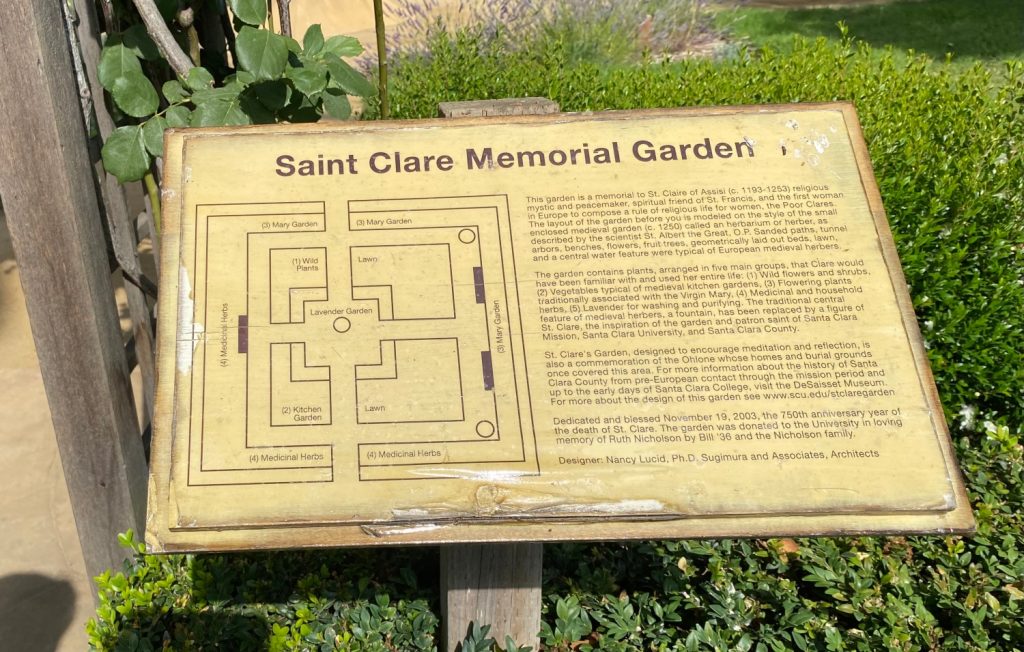
The Saint Clare Garden also acts as a commemoration to the Ohlone people, as the garden sits atop their former homes and burial grounds that once covered the area. For more information about the construction of the Saint Clare Garden, click here to visit its website. For more information about the Ohlone people and Santa Clara Mission history, we also recommend you take a trip to the de Saisset Museum after visiting the garden.
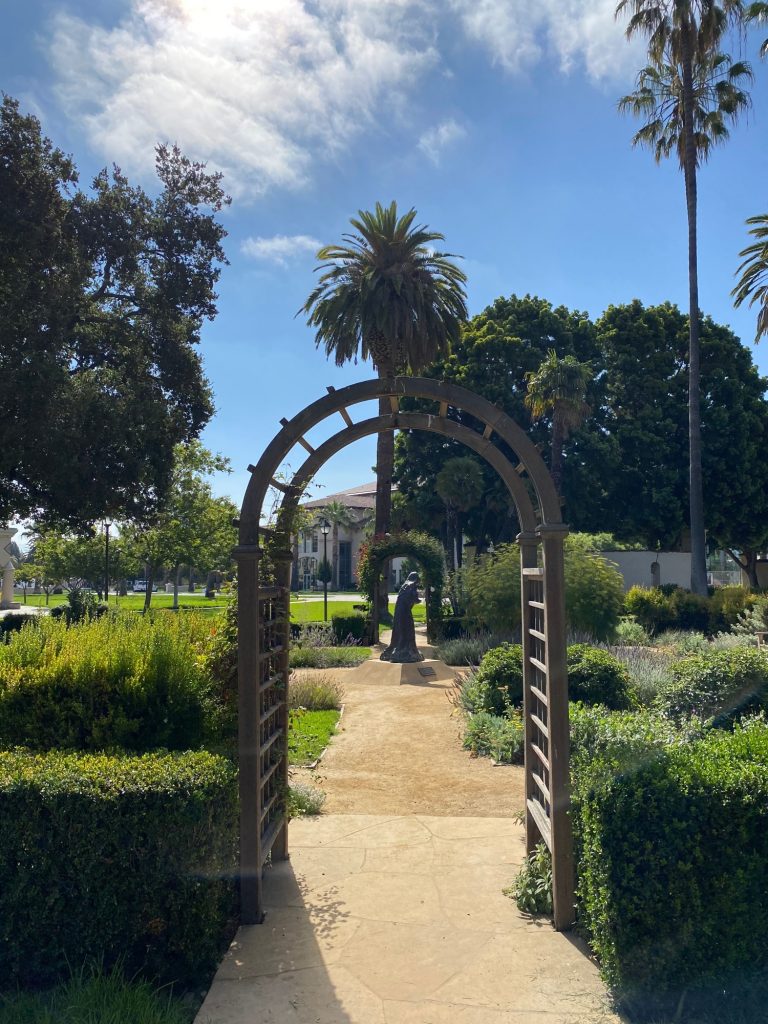
As we anticipate the return to in-person learning this fall, we’re excited to have students, especially students who have yet to set foot on campus, experience the beauty of SCU’s gardens. For those who have not seen any of the gardens in person, or have not taken the time to look at them in-depth, we highly encourage you to take the self-guided walking tour to see just how much the Mission Gardens has to offer. With the 2021-2022 school year coming closer, make sure to pause, take a break, and reflect while surrounding yourself with the ambiance of our lovely gardens!
Header Image: St. Joseph’s and Mission Gardens, date unknown (Image courtesy of SCU Archives)
Works Cited
Jacobus, Pauline. “The Mission Santa Clara Garden.” Pacific Horticulture, July 1976, pp. 10–12.
McKevitt, Gerald. The University of Santa Clara: A History, 1851-1977. Stanford University Press, Stanford, CA: 1979.
Mihalaos, John. “SCU Landscaping Beauty Owes Much to Gardner.” Mercury News [San Jose, CA], 13 Jan. 1963, p. 5.



